Backflow is defined as “the unwanted reverse of water or other substances into a potable water system”. Backflow can be caused by backpressure or back-siphonage. Backpressure backflow is caused by a downstream pressure that is greater than the upstream pressure. This can be the result of an increase in downstream pressure (pumps, pressure washers, elevation changes, etc.) or a reduction in the potable supply pressure (water main break, firefighting, main line maintenance flushing, excessive demand) or a combination of both. Back-siphonage is backflow that is caused by a negative pressure in a public water system or consumer’s potable water system. Years ago when blue toilet water was popular we would visually see the results of back-siphonage. When shutting down the water meter and digging up a front lawn to access a leaky service line, the line would be cut and as the house drained down we would see blue water flow from the open pipe into our ditch. This was evidence that back-siphonage was happening and that there was a toilet with a non-approved fill valve.
In a residence, backflow protection comes in the form of air gaps built into sink, lavatory, and tub faucets, anti-siphon toilet valves, and atmospheric vacuum breakers on irrigation valves and hose bibbs. Homes with large changes in elevation on their irrigation valves or underground valves are required to have a more stringent type of backflow prevention. Homes built since 2011 have been required to have a fire sprinkler system. These systems normally require the protection of a backflow device. Backflow devices are registered with your water supplier and the Department of Health, and are to be tested (usually once a year) and maintained by certified testers.
The level of backflow protection is determined by the degree of hazard. Backflow is a very real occurrence and can lead to sickness or death if our potable water is not protected. Contact us if you have questions about potential backflow issues at your home or business.
